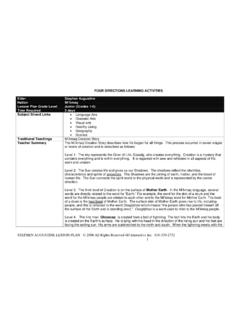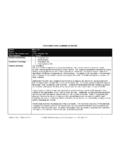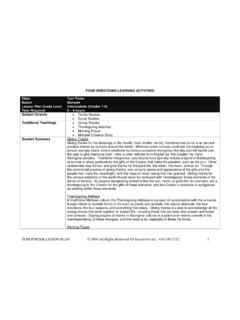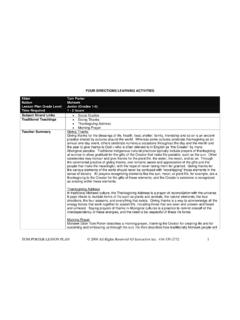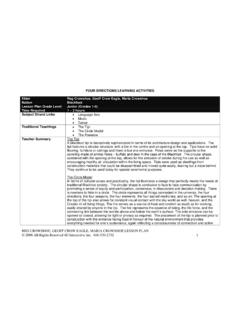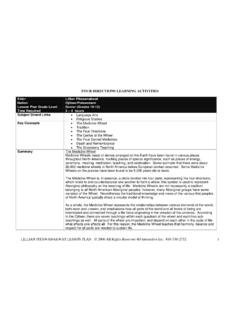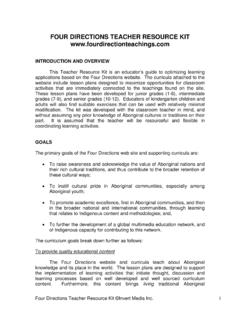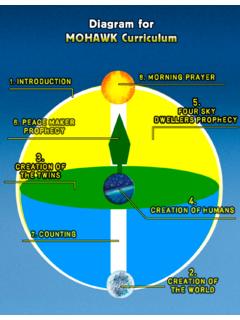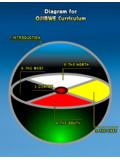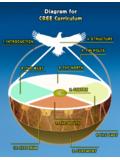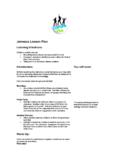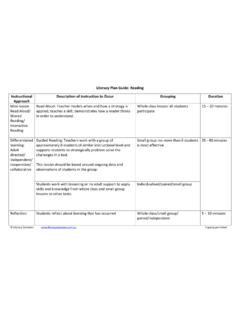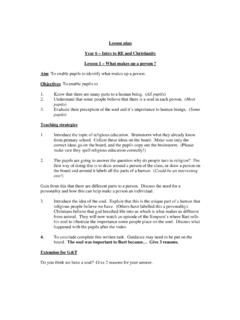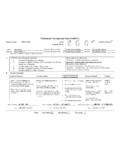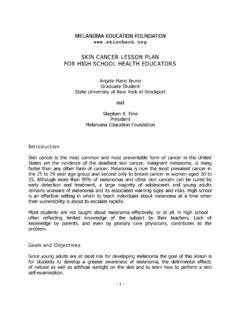Transcription of Elder Lillian Pitawanakwat Nation …
1 Lillian Pitawanakwat lesson plan 2006 All Rights Reserved 4D Interactive Inc. 416-530-2752 1 FOUR DIRECTIONS LEARNING ACTIVITIES Elder Lillian Pitawanakwat Nation Ojibwe/Potawotami lesson plan Grade Level Junior (Grades 1-6) Time Required 3 4 hours Subject Strand Links Geography Natural Science Astronomy Traditional Teachings The Medicine Wheel Tradition The Four Directions The Centre of the Wheel Teacher Summary The Medicine Wheel Medicine Wheels made of stones arranged on the Earth have been found in various places throughout North America, marking places of special significance, such as places of energy, ceremony, meeting, meditation, teaching, and celebration. Some estimate that there were about 20,000 Medicine Wheels in North America before European contact occurred. Some Medicine Wheels on the prairies have been found to be 5,000 years old or more.
2 The Medicine Wheel is, in essence, a circle divided into four parts, representing the Four Directions, which relate to and counterbalance one another to form a whole; this symbol is used to represent Aboriginal philosophy on the meaning of life. Medicine Wheels are not necessarily a tradition belonging to all North American Aboriginal peoples; however, many Aboriginal groups have some variation of the Wheel. Nevertheless the traditional knowledge and views of the various first peoples of North America typically share a circular model of thinking. As a whole, the Medicine Wheel represents the relationships between various elements of the world, both seen and unseen, and emphasizes how all parts of the world and all levels of being are interrelated and connected through a life force originating in the creation of the universe. According to the Ojibwe, there are seven teachings within each quadrant of the wheel and each has sub-teachings as well.
3 All parts of the wheel are important, and depend on each other in the cycle of life; what affects one affects all. For this reason, the Medicine Wheel teaches that harmony, balance and respect for all parts are needed to sustain Lillian Pitawanakwat lesson plan 2006 All Rights Reserved 4D Interactive Inc. 416-530-2752 2 life. Tradition Tradition is knowledge or ways of doing things that are taught by older people - or Elders - who have worked and studied many years with Elders that came before them to understand the traditions. The Four Directions Each quadrant of the Medicine Wheel represents one of four cardinal directions. The Ojibwe believe that the East represents the springtime and the beginning of all life, changing from spirit to human; the journey starts there. The journey continues to the South, the summer stage, to the West, the death stage, and then to the North, the rebirth stage.
4 This cycle continues in a clockwise motion around the Medicine Wheel, following the rising and setting of the sun, with the Four Directions serving as primary directional, or guiding, forces. The Centre of the Wheel From the perspective of traditional Aboriginal philosophy, the centre of the Medicine Wheel symbolizes the self in balance on its life journey. The central place of the Medicine Wheel is where one seeks to develop a holistic vision and understanding of creation and connection to all things. The Ojibwe believe that the Centre of the Wheel is represented by a flame and it is our responsibility to nurture this fire by reconciling conflicts with others and making peace within ourselves. Through reflection, meditation, awareness, acceptance and surrender, we are able to live balanced and whole lives. Learner Objectives Knowledge/Understanding: To identify the Ojibwe as an Aboriginal people with traditional teachings To develop awareness of the natural environment through the identification of the Four Cardinal Directions and the Four Seasons To identify and perceive the movement of the sun from east to west To identify the relationship between the Four Directions and the Four Sacred Colours of the Medicine Wheel.
5 To become familiar with the meanings of the terms Medicine Wheel , sacred , traditional , direction , respect and survival Inquiry/Values: To appreciate the unique attributes, or gifts, of each of the Four Directions To recognize that the Four Seasons make a whole which repeats in a cycle year after year To recognize the Medicine Wheel as an Aboriginal symbol with an ancient history Lillian Pitawanakwat lesson plan 2006 All Rights Reserved 4D Interactive Inc. 416-530-2752 3 To appreciate that the Four Directions are consistent and everlasting and that each individual has a central perspective in relation to these directions Skills/Applications: To physically identify the Four Cardinal Directions To physically demonstrate the movement of the sun To navigate the internet with some measure of control Strategy 1.
6 Take students to a place in an open area outside the school (yard or field). Ask if they know which direction they live in. Have them point in that direction. Ask them to look at the sun. Which way does the sun rise in the morning? Explain that this is the East. Where is it in the evening? Explain this is the West. Ask who knows what the other directions are called point them out. Explain South and North. Where are we standing? Each of us is at the centre of these directions at all times. 2. Explain that Aboriginal people have traditional teachings to share, given to them thousands of years ago and passed down through the generations. Aboriginal elders teach that the Four Directions are very special and very important, not just to them, but to everyone - because all of us share these same four directions no matter where we are: at home, at school, indoors or outdoors.
7 The Four Directions never change. Aboriginal traditions see the four directions as sacred, because each direction gives us special gifts. So they teach that we must always respect the four directions and the gifts they bring. What is respect? 3. Have the class face East together. What comes from the East that we need? What is the gift of the East? Explain that this is the direction where the sun comes up every day. Why is the sun important to us? The sun s light gives us warmth and makes our plants and foods grow; we need the sun for our physical survival. What is survival? What colour is the sun? Yellow: a colour that the Ojibwe people use to represent the East. Now turn together to the south, in the direction that the sun moves. Explain that this is the direction the sun passes each and every day, year after year. The sun gets hotter in the south, which is represented among the Ojibwe by the colour red.
8 Now turn to face West together. Explain that this is where the sun goes down and night comes, represented among the Ojibwe by the colour black. Now turn to face North together. Explain that this is where a new day gets ready to be born. North is represented among the Ojibwe by the colour white. Explain that Ojibwe elders teach that these directions and colours are sacred, and are remembered in their prayers. 4. Face East again, and the cycle is complete. Did we change our position? No, we stayed in the centre, because we are always in the centre. Even if we move left or right, we are always in the middle of the four directions. So this is important to remember according to traditional teachings because it reminds us that we are connected to the four directions. We cannot escape them. They are part of us and we are part of them. Return to class.
9 Lillian Pitawanakwat lesson plan 2006 All Rights Reserved 4D Interactive Inc. 416-530-2752 4 5. Show a picture of a Medicine Wheel to the class to generate discussion (see links below). Who knows what this is? What is this called? Where does it come from? Show a modern representation of a Medicine Wheel. What do the colours represent? Why is it called a Medicine Wheel? What is medicine? We use medicine to heal us; it is good for us; it keeps us strong and healthy. This looks like a wheel because it is round and each part is the same size. The Ojibwe and other Aboriginal peoples have used the Medicine Wheel as a symbol for generations, to remember and respect the Four Directions and the good things that the sun and the seasons bring us every day. Explain a little bit more about Medicine Wheels from the Teacher Summary above. 6. Now ask students to identify the Four Directions in the classroom.
10 Put up a yellow sheet on the eastern wall. Put up a red sign in the south; a black sign in the west; and a white sign in the north. Explain these are colours used by the Ojibwe. Other Aboriginal groups use different colours. 7. Explain that Ms. Lillian Pitawanakwat is an Ojibwe Elder and has traditional teachings to share with the students about the Medicine Wheel. The Medicine Wheel has been a symbol for generations to remember and respect the Four Directions and the good things that the sun and the seasons bring us every day. 8. Visit together as a class to read the Elder biography. 9. Individually or in pairs, have students listen to the Elder s teaching on the East. 10. On paper, have students draw a large circle. Draw four quadrants. Colour the first quadrant on the right in yellow. Label it East. Ask, What else does the Elder say the East represents?
